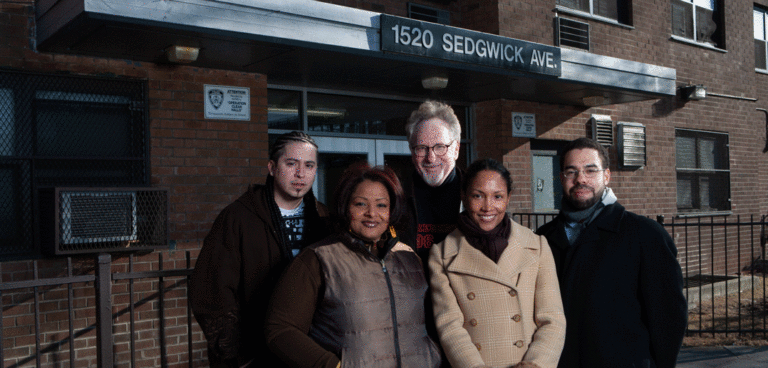Fifty years ago, a new art form was born on the streets of the Bronx. It was born out of the rich musical traditions and spirit of innovation of communities of color ravaged by industrialization and abandoned by large parts of the country. In the decades since, the Fordham community has not only studied and celebrated hip-hop, but also helped preserve its history and birthplace.
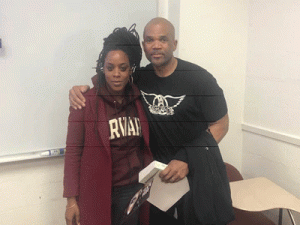
When 1520 Sedgwick Avenue, the Bronx building considered by many to be the birthplace of hip-hop, lay in disrepair, Dr. Mark Nason of Fordham University became a community organizer trying to save the city. I contributed my research. He also led Fordham’s other efforts to preserve hip-hop’s past. This included interviews with early hip-hop artists by the university’s Bronx African American History Project (BAAHP), which created a significant collection of oral histories by the DJ and his MCs. Nason also teaches a popular class called “From Rock ‘n’ Roll to Hip Hop,” which covers the past and present, and has featured artists like Cardi B, Nas, Run-DMC, and once Fordham’s “Rapper in Residence.” The school uses artists such as Aqua Naru, who was the founder of the school, to help students understand rock and roll. The art form and its role in United States history.
“I think the lesson is to explore, interrogate, and embrace the cultural creativity of our surrounding areas, because it Because it’s unparalleled.”
The party that started it all
It is now legendary. On August 11, 1973, teenage Cindy and her Campbell crossed her Bronx and threw a back-to-school party in her community room at 1520 Avenue Sedgwick, just a few blocks from the Expressway. It was sponsored. She charged an admission fee and had her brother Clive, aka DJ Kool Herc (so big they called him Hercules), spin records. Hark practices his father’s sound on his system, jumping only to the hottest percussive grooves, the parts that dancers really get into, and working with his two copies of the same record to stretch it out. I did. He had his two turntables and a microphone, and he played music that combined funk and disco with the Jamaican dancehall style he over-talked to the music he grew up hearing. Although many have noted that this art form was developing elsewhere, this party is commonly celebrated as the birth of hip-hop.
Save 1520 Sedgwick
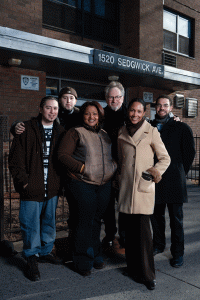
Fast forward 40 years to the aftermath of the 2008 financial crisis. In a perverse reversal of the redlining that devastated the Bronx at the birth of hip-hop, 1520 saw a mountain of debt acquired by failed Wall Street investors. Maintain buildings. Organizers from the Urban Settlement Assistance Committee, an organization focused on preserving affordable housing, hope documenting the 1520-year history will help preserve the homes. They asked Nason to use his scholarly acumen to determine the significance of 1520.Nason’s research – later led to his lectures on C-Span and perform PBS History Detectives This was one of the efforts that helped convince the city government to intervene, ultimately saving the building that was the birthplace of hip-hop as a decent and affordable place to live. I did. And in 2021, the U.S. Congress passed a resolution recognizing 1520 Sedgwick as the birthplace of hip-hop.
in their own words
Brian Parnell, FCRH’00, former director of research at BAAHP and current associate professor of African American studies at Bowdoin College, says that hip-hop culture “embodies the characteristics of a long history of black culture in the United States. “
“Hip-hop has transformed the supposed devastation of the environment in which its creators lived into something surprising, fantastic, and beautiful. And this has been demonstrated in black culture for centuries. That’s the thing,” he said.
In 2003, Fordham founded BAAHP at the request of the Bronx County Historical Society to document the history of Black people in the Bronx. Nason said he was soon getting calls from DJs and MCs asking, “Why don’t you record us?”
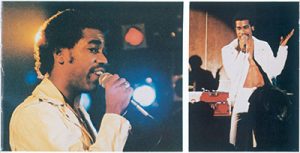
Over the next few years, BAAHP collaborated with early hip-hop practitioners such as Pete DJ Jones and Curtis Blow, and Benji Melendez, who in 1971 brokered a gang truce that allowed music-mediated movement between neighborhoods. We have built an archive of interviews. . The digital recordings are accessed by scholars around the world, from Nairobi to Singapore to Paris to Berlin.
WFUV in the house
One of the first hip-hop DJs, Eddie Cheeba was active in both downtown clubs and uptown parties. During the summer of 1978, he worked at Fordham radio station WFUV. He rapped about this at a legendary 1979 party with Mele Mel, Grandmaster Flash and DJ Hollywood. “Cheeba is going to be the winner. I’m mean, I’m bad, I’m cool and smooth, so I know you’ll do it with me. That’s why I ran the game on WFUV. I think so. (22 minutes have passed)
“Black people were free.”
Michael Partis, FCRH ’08, who grew up in the Bronx and has contributed to BAAHP, said it’s important to maintain the joy and experimentation felt in the early days of hip-hop.
“I think it’s important to document the history of hip-hop because it really shows the freedom of black people. In this country, people of African descent often face racism, racial discrimination, We are bound by the social norms of “not doing things.” Get used to it “In a certain way,” he said. “And hip-hop, in its early form, broke through all of that. Black people were free.”
While Partis was at Fordham, the student-led Hip Hop Coalition focused on the roots of hip hop’s political consciousness. They brought acts to campus that were neither mainstream nor corporate. “They were street people talking about socio-economic inequality and how the working poor community, the black and brown working community, responded to that,” he said. “I thought it was a great political education for the Fordham kids,” he said.
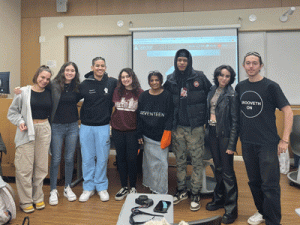
Now, Nason is helping continue that education at Fordham.
“I’m not a hip-hop scholar, but rather someone who works to make the voices of the community heard,” he said.
The power and spread of music
“When students in my classes learn hip-hop, there are two things that impress them the most: One is the power of the greatest hip-hop artists like Tupac Shakur, Lauryn Hill, and Wu-Tang Clan. Tell a story that not only tugs at your heartstrings, but also makes you think. And secondly, there is a truly global influence of hip-hop, which includes not just music but dance and visual art, and is now popular in the Western Hemisphere. It has deep roots not only in Europe but also in Africa and Asia,” he said.
“Hip-hop is a multicultural art movement of society’s most isolated, marginalized, and disenfranchised people, creating a movement that has taken the world by storm.”
– Written by Eileen Markey, FCRH ’98


